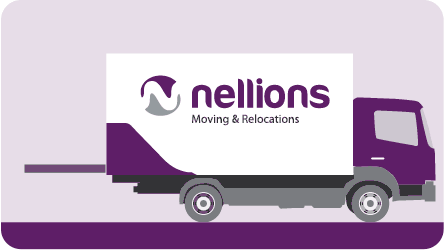Last updated on August 18th, 2022 at 08:37 am
If you’re interested in shopping around for home insurance protection, it can pay to understand what various home insurance terms mean.
That’s because informed customers are much more likely to make the right decisions about the kind of cover they need.
Essentially, home insurance is a way to protect your home and belongings against financial loss in the event they’re damaged, lost, or stolen.
Because your home is possibly one of your most significant investments, it can be emotionally and financially devastating when loss or damage occurs.
You need only imagine arriving home one evening, tired from a hard day’s work, only to find your neighbours and firefighters battling flames from your burning house. Or instead of a fire, you could find your house ransacked by burglars or flooded after pounding rains.
It takes a single incident to have all your life’s treasures wiped from the face of the earth. Faced with any of these scenarios, you might find it hard to figure out where to start.
Fortunately, these losses, grievous as they might be, don’t have to cripple you.
Home insurance can cover your living expenses if you temporarily can’t live in your home due to an insured loss.
We delve right into a selection of the common home insurance terminologies you’re likely to encounter on your insurance journey.
Glossary of Select Home Insurance Terms

Accident—a detrimental event that’s unintentional, unforeseen, and unexpected.
Accidental damage—any sudden and unintentional damage, such as spilling red wine on an expensive rug. Accidental damage cover can be bought for your buildings, your household goods, or both, but it’s usually an optional extra.
Actual Cash Value—shortened to ACV, it’s your property’s value at the time of a loss or damage. ACV is usually determined as the replacement cost minus depreciation.
Add-ons—these are additional policies that may be added to your insurance for extra protection. An example would be accidental damage cover.
Adjusted basis—the cost of your property plus the value of any improvements, less depreciation.
Adjuster—also known as a loss adjuster. The individual who investigates and settles insurance claims on behalf of your insurer.
Agent—also known as an insurance broker. A licensed individual who sells insurance policies. Agents are independent professionals who are registered under the Insurance Act and who advise clients on insurance. They operate as your agent, not those of the insurance company.
Alternative accommodation—suitable accommodation that’s provided by your insurer if you can’t live in your home due to the occurrence of an insured event.
Application—a form provided by the insurer that collects information about the property and individual who wants an insurance cover. You must sign this form to attest to the accuracy of the information provided. Insurers rely on applications to determine whether to issue a policy.
Appreciation—the increase in a property’s value or asset that’s caused by economic factors such as inflation. It’s the opposite of depreciation.
Assessed value—the value that’s placed on your property for purposes of taxation.
Betterment—an improvement that increases your property’s or facility’s value.
Blanket insurance policy—a single policy that covers more than one individual or piece of property.
Breach—the failure to perform your obligation or promised act.
Cancellation—the voluntary termination of an insurance policy by either the insurer or the insured before the renewal date.
Cancellation fee—the fee your insurer may charge if you cancel a policy after the cooling-off period.
Cash Value—the amount of money the policy owner receives as a refund if coverage is cancelled and the policy returned to the company. It’s also known as cash surrender value.
Certificate of insurance—the document that contains or shows verification of the insurance as well as information on the types and limits of coverage provided by the insurer, the policy number, the name of the insurer, and the policy’s effective period.
Claim—a formal request by an insured individual or policyholder for compensation or coverage of an insured loss to an insurance company.
Claimant—the individual who makes an insurance claim (can also be a third party who makes a claim against the insured individual).
Coinsurance—the sharing of risk between the insured and the insurer.
Contents insurance—also referred to as personal property coverage. It’s the portion of your home insurance policy that covers damage or loss to the contents of your home, garden, or outbuildings due to an insured event. Contents include household goods and things you keep in any outbuildings, such as gardening equipment.
Cooling-off period—the initial period during which you can cancel your policy without charge. It can be around two weeks.
Deductible—the amount your insurer withholds from the claim amount paid out to you (subject to the sum insured). While a deductible reduces policy limits (maximum payout), excess (defined below) doesn’t.
Depreciation—a decrease in your property’s value. The opposite of appreciation.
Discharge voucher—also called a settlement intimation voucher. It’s a signed form that indicates that a claim has been settled amicably between the insurer and the insured.
Dwelling—a structure in which people live.
Escrow—money that’s placed in a third party’s hands until specified conditions are met.
Excess—the amount you must pay towards any claim before the liability passes to your insurer. For instance, if you make a claim for a Ksh 50,000 loss when your policy excess is Ksh 5,000, your insurer will only pay out Ksh 45,000.
Exclusions—the things your insurance policy won’t cover, which can include issues resulting from wear and tear, war, or terrorism. Exclusions vary between insurance products, but all of them should be clear and specific.
First-party loss—a situation that involves only the insured and the insurer.
Hazard—action, condition, circumstance, or scenario that increases the likelihood of the occurrence of a loss.
High-risk items—certain property items that tend to be valuable possessions such as antiques, jewellery, cameras, and so on. Your insurer may handle them differently compared to general contents.
Housekeeping—a property’s overall care, cleanliness, and maintenance. Underwriters will consider this crucial factor when deciding on whether to accept your application.
Indemnity—the payment of a loss by the insurance company to the insured, but for no more than the actual amount of the loss. For example, if you have Ksh 100,000 in flood coverage but sustain Ksh 20,000 in damages, you receive Ksh 20,000 as compensation, not Ksh 100,000.
Inflation protection—the facility that adjusts your insurance policy limits to account for increases in the repair or replacement costs of your property due to inflation.
Insurance policy—also known as insurance. The contract or document between the insurer and the policyholder that provides for compensation for specific losses in exchange for a periodic payment.

Insured—the entity covered by an insurance policy.
Insured events—the accidental, unexpected, or unforeseen events for which your home insurance provides cover.
Insurer—the company (or person) that underwrites an insurance risk. Also referred to as the insurance company that takes on the risk.
Inventory—a list of your home’s contents, taken room by room. It’s useful for working out how valuable your contents are and if you need to make a claim.
Larceny—the theft of personal property.
Lapse—what happens when a policyholder stops paying premiums or doesn’t renew a policy, so it becomes null and void.
Liability—the responsibility to compensate another party due to your negligence.
Loss—the amount sought through the insured’s claim.
Loss history—the losses you’ve suffered as well as their values over a certain period.
Market value—what your home or property would sell for in the current market.
Material misrepresentation—false statements made by an applicant or policyholder that affect whether the insurer will accept the risk and issue a policy.
Negligence—the failure to exercise reasonable care in a given scenario. Can be as a result of doing something or failing to do something.
Peril—a specific cause of loss or risk that’s covered by an insurance policy. It could be fire, floods, or theft.
Personal liability protection coverage—protects you and covered family members or parties against lawsuits. These may arise from and in connection with accidents or damage involving third parties.
Policy limits—the maximum your insurer will pay out for any single event or item. The policy schedule will usually contain details.
Premium—the amount payable to your insurer as per your agreement. For instance, it could be yearly or monthly instalments or a single ‘one-off’ payment.
Replacement cost—the current price of a new item or the cost associated with replacing an item or property at current market prices.
Rider—also known as an endorsement. It’s an amendment to a policy that’s used to add or delete coverage.
Risk—the chance a loss may occur.
Subrogation—the insurance company’s right to recover from the responsible party after payment of a loss.
Sum insured—the maximum amount an insurance company will pay upon a claim made by the insured to cover an incurred liability. This amount relates to the value of the goods at risk, making it the basis upon which your premiums are calculated.
Surcharge—an extra charge that’s added to your premium by your insurer. For home insurance, it’s usually added if you have a claims history.
Third-party—Any other person who may be affected by the policyholder’s actions. You’re the first party in an insurance policy, while your insurance company is the second party.
Third-party loss—a situation involving a person other than the insurer and the insured.
Underwriter—the individual who decides how much to charge, in addition to managing the account that bears the cost of claims by analyzing and evaluating the risks involved in insurance.
Underwriting—the process an insurer uses to decide whether to accept or reject an application for an insurance policy.
Unearned premium—the insured’s remaining premium equity in his policy. It’s the part of the policy premium that hasn’t been used up.
Voluntary excess—a higher excess you might be able to specify so that you might reduce your premium. The excess is the amount of your insurance claim that you’ll pay (and which your insurer typically subtracts from your claim amount)
Wear and tear—the decrease in an item’s or property’s value due to deterioration over time.
DISCLAIMER: While the information provided above is meant to guide you in understanding common home insurance terms, it isn’t intended to be official or legally binding. Instead, it’s a basic guide that shouldn’t be taken to be complete and definitive.
Sometimes, home insurance terms can seem complicated when all you want is to understand the different types of coverage and how they can help protect what matters most to you.
Reach out to Sitiri Home Insurance if you’d like to clear up anything else or get started on the home insurance journey—minus the headaches.








